
"From a distance, the Optimus Prime resembles a hundred-foot lotus." The Liao Dynasty Yingxian Wooden Pagoda, known as the "Dougong Museum," is the world's largest, tallest, and oldest wooden Buddhist pagoda. It retains nearly its original Liao Dynasty layout and stands as an outstanding example of ancient Chinese wooden architecture. On September 21st, the exhibition "Yingxian Wooden Pagoda: Miracles and Echoes of a Millennium of Wooden Structure" opened at the Shanxi Museum. A large-scale video documentary about the pagoda, "Yingxian Wooden Pagoda," was also released simultaneously.

Yingxian Wooden Pagoda (Photo source: Shanxi Evening News)
The Yingxian Wooden Pagoda (also known as the Fogong Temple and Sakyamuni Pagoda) was built in 1056 AD (the second year of the Qingning reign of the Liao Dynasty, the third year of the Zhihe reign of the Northern Song Dynasty). Standing 67.31 meters tall, with a base diameter of 30.27 meters and a total weight of over 7,400 tons, it is the tallest and oldest existing all-wooden pavilion-style building in the world. In 1961, the State Council designated it a National Key Cultural Relic Protection Site. In September 2016, it was certified by the Guinness Book of World Records as the "World's Tallest Wooden Pagoda." The Yingxian Wooden Pagoda boasts a dignified appearance, well-proportioned proportions, and graceful contours. Ancient texts describe it as "the most beautiful pagoda in the world."
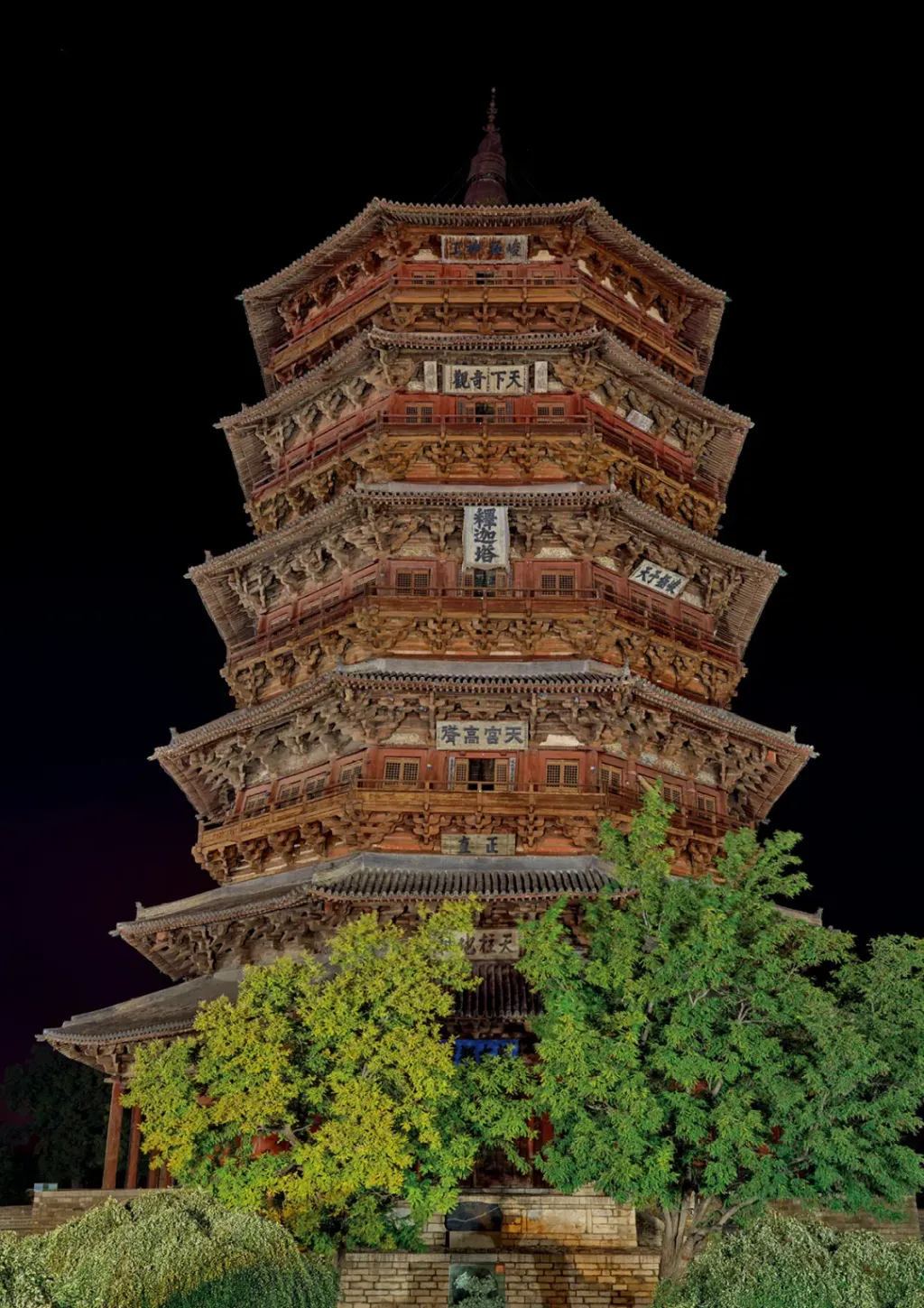
Yingxian Wooden Pagoda
The wooden pagoda consists of three parts: the base, the main body, and the finial. Hundreds of thousands of bracket sets (dougong) of 59 different types (dougong not only share the weight of the pillars but also buffer and disperse external forces) adorn the pagoda like blossoming lotus flowers. This variety is rare in China, earning it the nickname "Dougong Museum." Ancient texts describe it as "a pillar that, from a distance, resembles a hundred-foot lotus flower." Structurally, the Yingxian Wooden Pagoda boasts an even more ingenious design, employing no iron nails, but entirely constructed from interlocking wooden components.
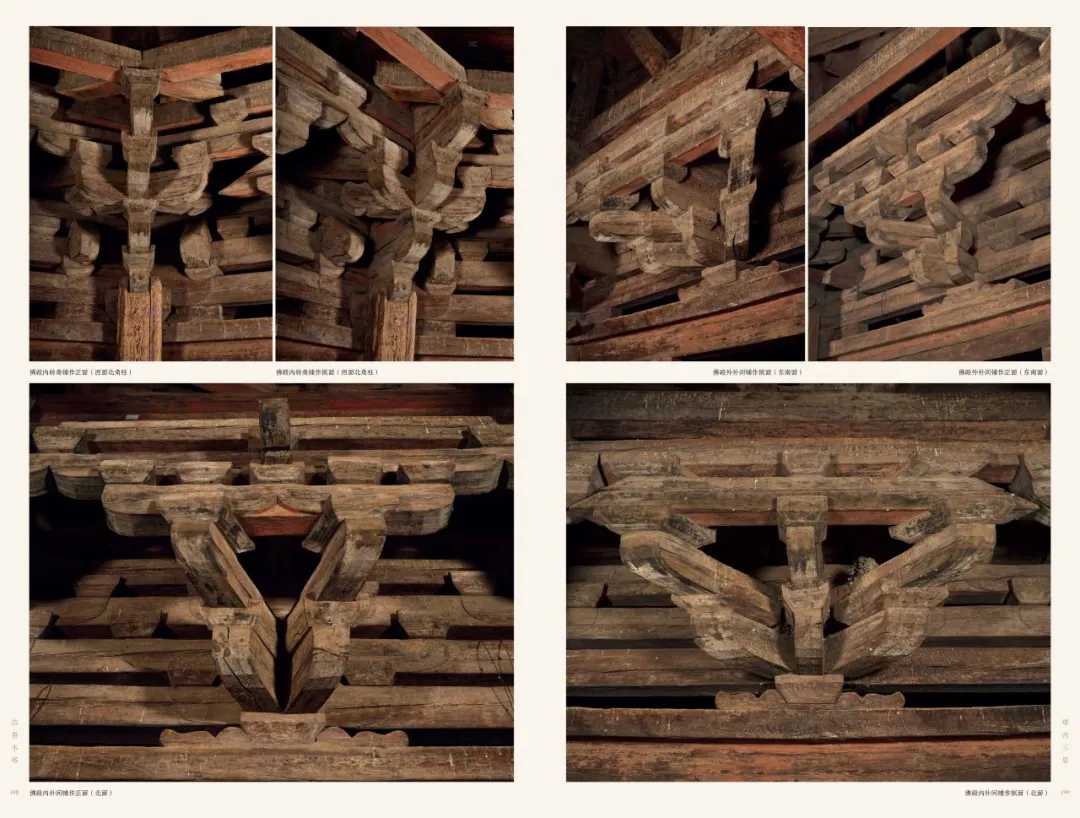
Three-story brackets of the Yingxian Wooden Pagoda
Inside and outside the wooden pagoda, 52 plaques and six couplets are hung. Among them, "Extreme Divine Craftsmanship" was inscribed by Ming Chengzu Zhu Di, and "A Wonder of the World" was inscribed by Ming Wuzong Zhu Houzhao. Two Buddha tooth relics, discovered in 1966 and 1974 respectively, are believed to be the actual relics of Sakyamuni Buddha. The Yingxian Wooden Pagoda is a model of ancient architecture worldwide, a center of Buddhist culture, and a sacred site.
In order to protect this national treasure that is nearly a thousand years old, the part above the second floor of the wooden pagoda is no longer open to tourists. If you want to get closer to and understand this wooden pagoda better, you need to rely more on text and visual materials.
On September 21st, the Shanxi Museum launched the special exhibition "Yingxian Wooden Pagoda: Miracles and Echoes of a Millennium-Old Wooden Structure." Drawing on over 130 high-definition images acquired through professional surveys in recent years, the exhibition systematically examines the Yingxian Wooden Pagoda's architectural remains, religious art, and preserved cultural relics, presenting a comprehensive and in-depth look at this world's tallest existing wooden pavilion-style structure.
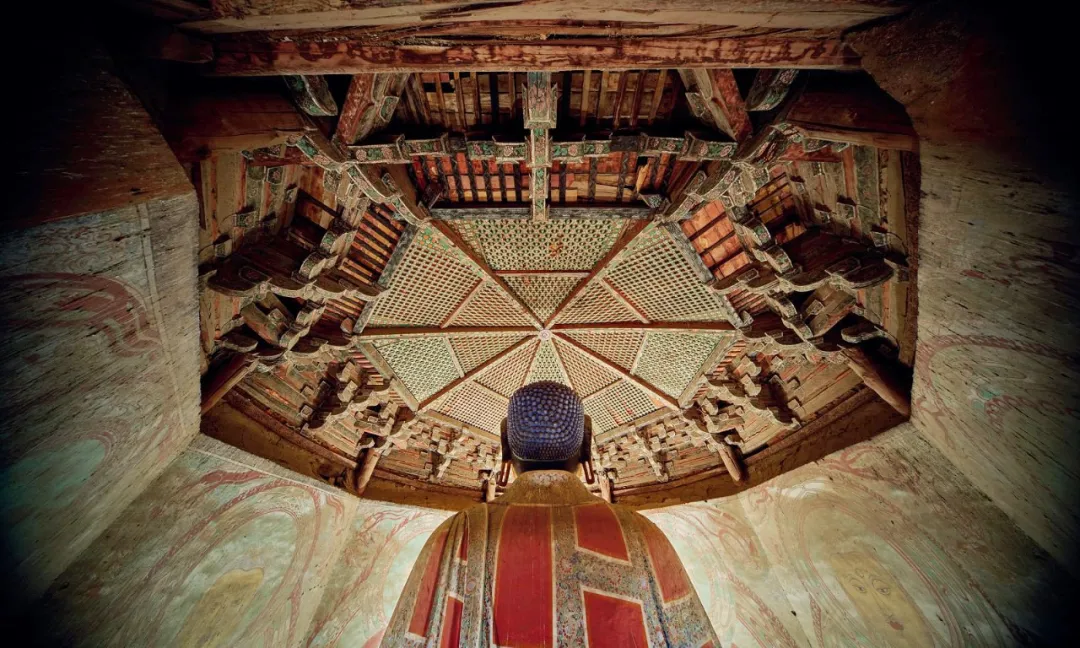
The inner caisson of the Yingxian Wooden Pagoda
The exhibition is divided into three units: "Architectural Miracle", "Buddhist Kingdom in the Pagoda" and "Cultural Relics in the Pagoda", which deeply interpret the value of the wooden pagoda.
In the "Architectural Wonders" section, Liang Sicheng's "Sakya Pagoda of Fogong Temple in Ying County, Shanxi" and Li Qianlang's "Deconstructed Sectional View of Sakyamuni Pagoda of Fogong Temple" clearly present the approximately 67-meter tall wooden pagoda and its nine-story structure of "five visible and four hidden", demonstrating the exquisite use of materials and structures by ancient Chinese craftsmen.
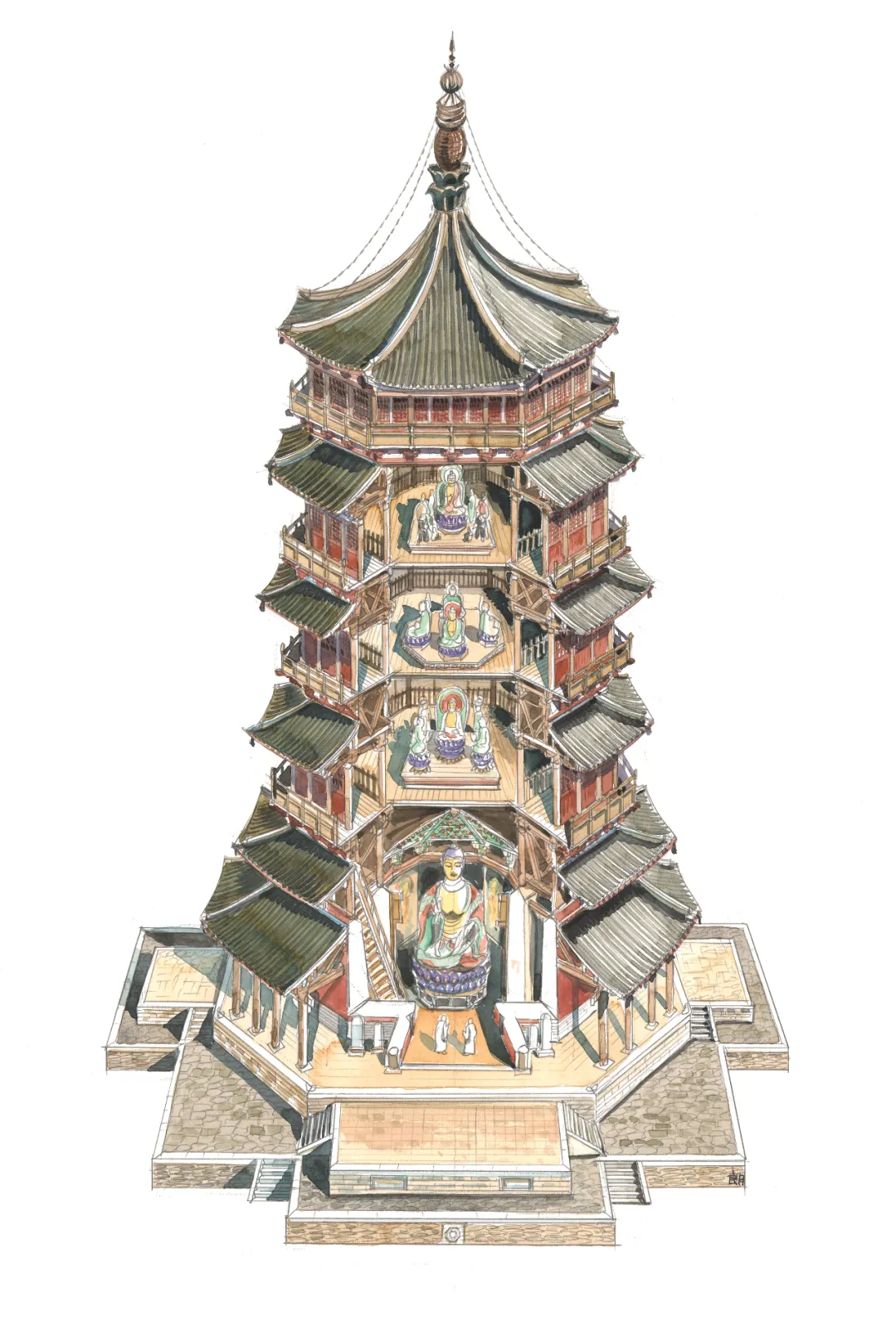
Deconstructed cross-section of the Sakyamuni Pagoda at Fogong Temple, drawn by Li Qianlang
In the "Buddhist Kingdom in the Pagoda" unit, the five-story Buddhist temple inside the Yingxian Wooden Pagoda progresses from bottom to top with progressive spatial conception and religious symbolism, from the clay statue of Sakyamuni and the surrounding murals of six Buddhas enshrined on the first floor, to the Tantric Mandala altar consisting of Vairocana Buddha in the wisdom fist seal and the eight great Bodhisattvas on the fifth floor, fully displaying the charm of Liao Dynasty Buddhist art.
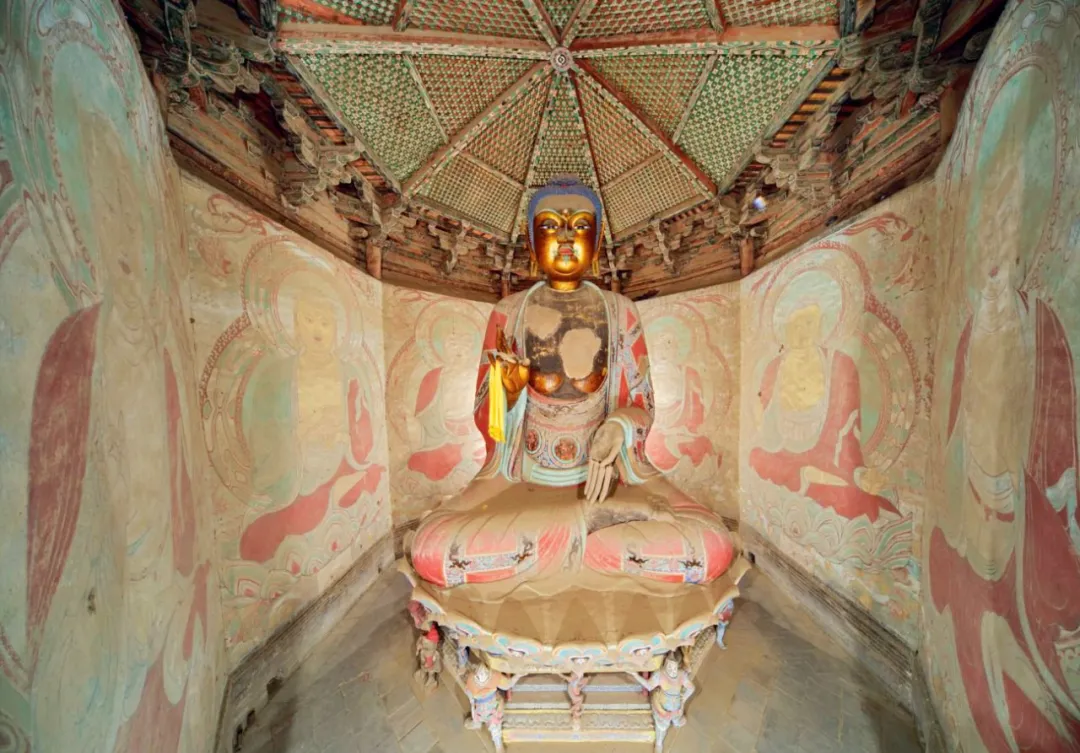
The main statue of Sakyamuni and the six Buddha murals
The "Cultural Relics" unit focuses on displaying the "treasures in the pagoda" that were unearthed from the wooden pagoda's Buddha statues between 1966 and 1977: the seven-treasure relics bear witness to the piety of the ancient offering culture, some official editions of the "Khitan Tripitaka" fill in the research gaps, and precious paintings restore the style of Liao Dynasty Buddhist art.

The crystal gourd from the second floor of the wooden tower
The large-scale pictorial collection "Yingxian Wooden Pagoda," edited by Liang Jian, executive editor Ye Nan, and photographed by Ren Chao, and compiled by the Shanxi Museum and the Yingxian People's Government, was launched at the event. This book represents the most comprehensive, systematic, and clear-cut large-scale quarto folio document on the Yingxian Wooden Pagoda to date. The book includes over 800 ultra-high-definition images of the wooden structure, statues, murals, plaques, and cultural relics, capturing the pagoda's architectural details and artistic charm with exceptional precision. Departing from a singular architectural history perspective, the book integrates the multidisciplinary contributions of archaeology, art history, religious studies, ancient book editions, and the intangible cultural heritage of silk weaving. Numerous national treasures and cultural relics are presented in high-definition detail for the first time, providing valuable first-hand material for the history of religion, printing, and art.
The book centers on the architectural space of the Yingxian Wooden Pagoda, following a logical progression from the interior to the exterior, starting with the central Buddha statue and spreading outwards. It showcases the various cultural relics within the first five floors, creating an immersive reading experience that transcends time and space. Through ultra-high-definition detail of the murals and inscriptions throughout the pagoda and infrared photography, it reveals brushstrokes, ink redrawings, and historical information lost to time, providing new research materials and aesthetic perspectives for both academics and the public.
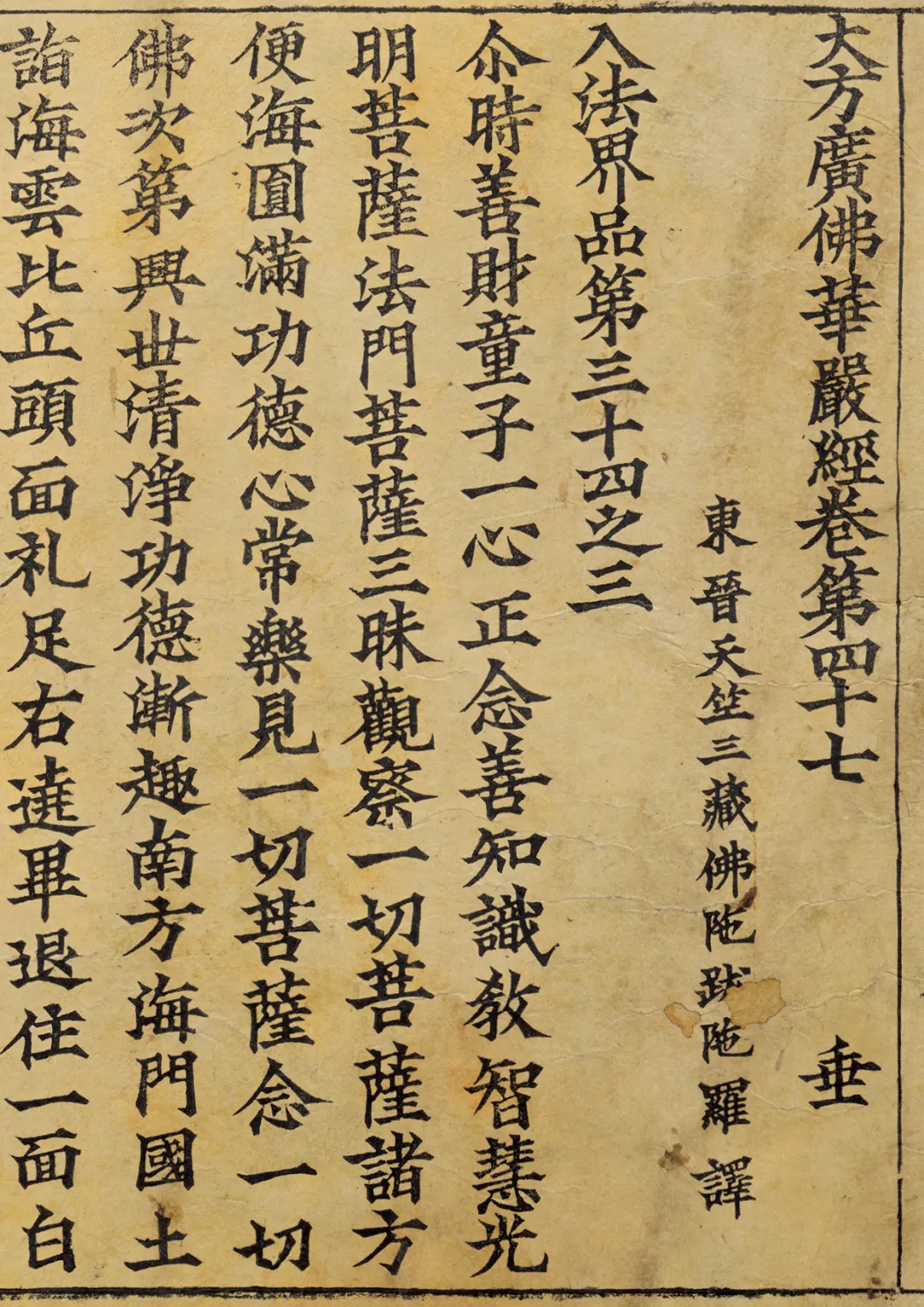
The Avatamsaka Sutra (Image source: Yingxian Wooden Pagoda)
This publication, featuring a selection of national treasures, Liao Dynasty Buddhist scriptures and artworks, has significantly enriched the documentary and artistic archive of Liao Dynasty material culture. Of particular note is the Liao Dynasty Buddhist canon discovered in a wooden pagoda. This compilation includes 17 volumes, each fully photocopied and organized into six categories: Khitan Canon, Lotus Sutra, Bodhisattva Precepts, Avatamsaka Sutra, Consciousness-Only School, Esoteric Buddhism, and Other Texts. The Khitan Canon is the only extant physical testimony to the pinnacle of Liao Dynasty imperial woodblock printing and the flourishing of Buddhist culture. Representing the highest level of Chinese woodblock printing in the 11th century, it has garnered considerable scholarly attention since its discovery. This first, high-definition, complete publication provides unprecedented, first-hand, high-definition evidence for Buddhist philology, ancient text bibliography, and rare book research.
Among the artifacts found in the collection are extremely rare Buddhist artworks, including paintings and carved door panels, enriching the richness and depth of this treasure trove of Liao Dynasty Buddhist art. For example, five original frontispieces from the Lotus Sutra, each of three types, remain, demonstrating a northern style inherited from the Tang Dynasty that gradually faded into obscurity.

Liao Tibetan door painting (Source: Yingxian Wooden Pagoda)
The Yingxian Wooden Pagoda's painted sculptures are massive and well-organized, not existing independently but meticulously integrated with the pagoda's architectural structure and spatial design. For example, the eight Bodhisattva statues on the fifth floor, though their heads and hands have been remodeled, have largely preserved their lotus pedestals and bodies, retaining many details of clothing characteristic of the mid-to-late Liao Dynasty. The pagoda houses 26 such statues, dating back to the Liao Dynasty, providing invaluable firsthand material for the study of Liao Dynasty history, religion, art, architecture, clothing, and craftsmanship.
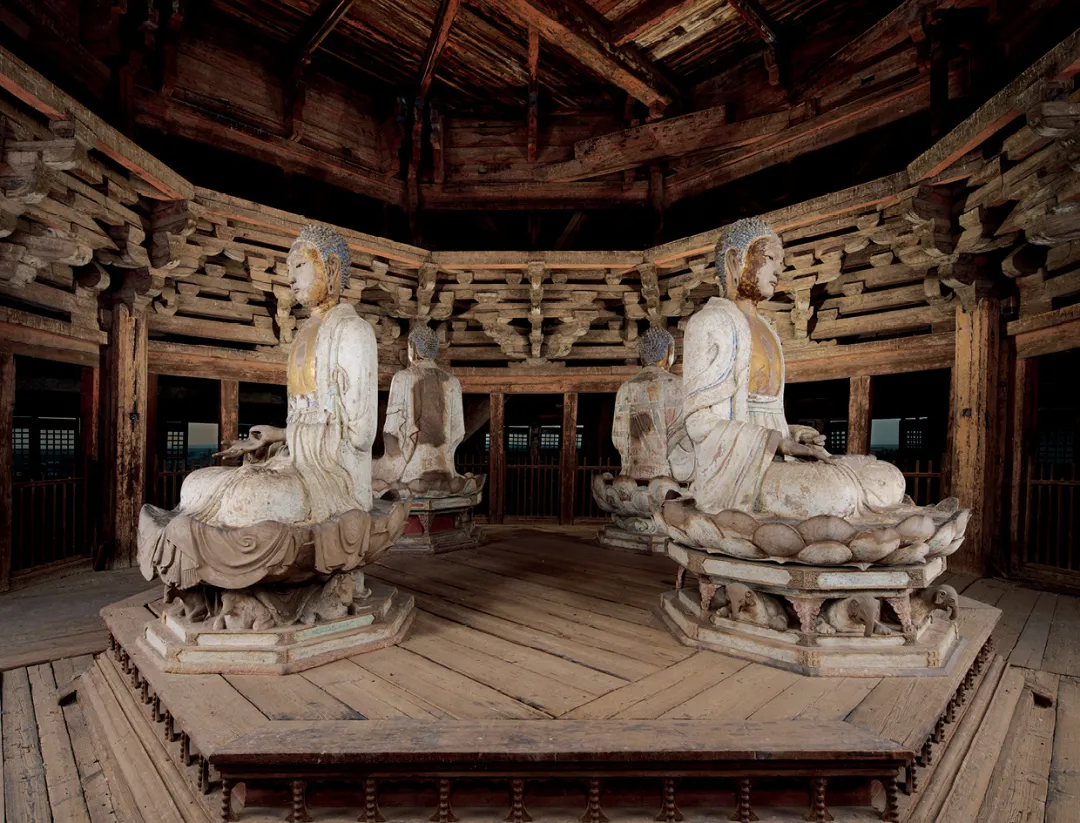
Painted statues inside the Yingxian Wooden Pagoda
The murals on the first floor of the Yingxian Wooden Pagoda, such as the "Offering Flying Apsaras" holding tributes, the "Flower-scattering Flying Apsaras" scattering auspicious flowers with raised hands, and the "Dancing Flying Apsaras" with graceful postures and dancing lightly, are also presented in the book "Yingxian Wooden Pagoda".

Mural (Source: Yingxian Wooden Pagoda)
The "Yingxian Wooden Pagoda Special Academic Symposium" was held concurrently at the Shanxi Museum. Over 20 experts and scholars from Peking University, the China Academy of Art, the Palace Museum, and the Chinese Academy of Cultural Heritage, among other institutions, engaged in in-depth discussions focusing on topics such as the research and display of the Yingxian Wooden Pagoda, the study of ancient wooden pagoda architecture, the pagoda's murals and sculptures, and the pagoda's collection of cultural relics.
The event was co-organized by Shanxi Museum, Shanghai Painting and Calligraphy Publishing House, Ying County People's Government, and Shanxi Institute of Protection of Ancient Architecture and Colored Sculptures and Murals.



